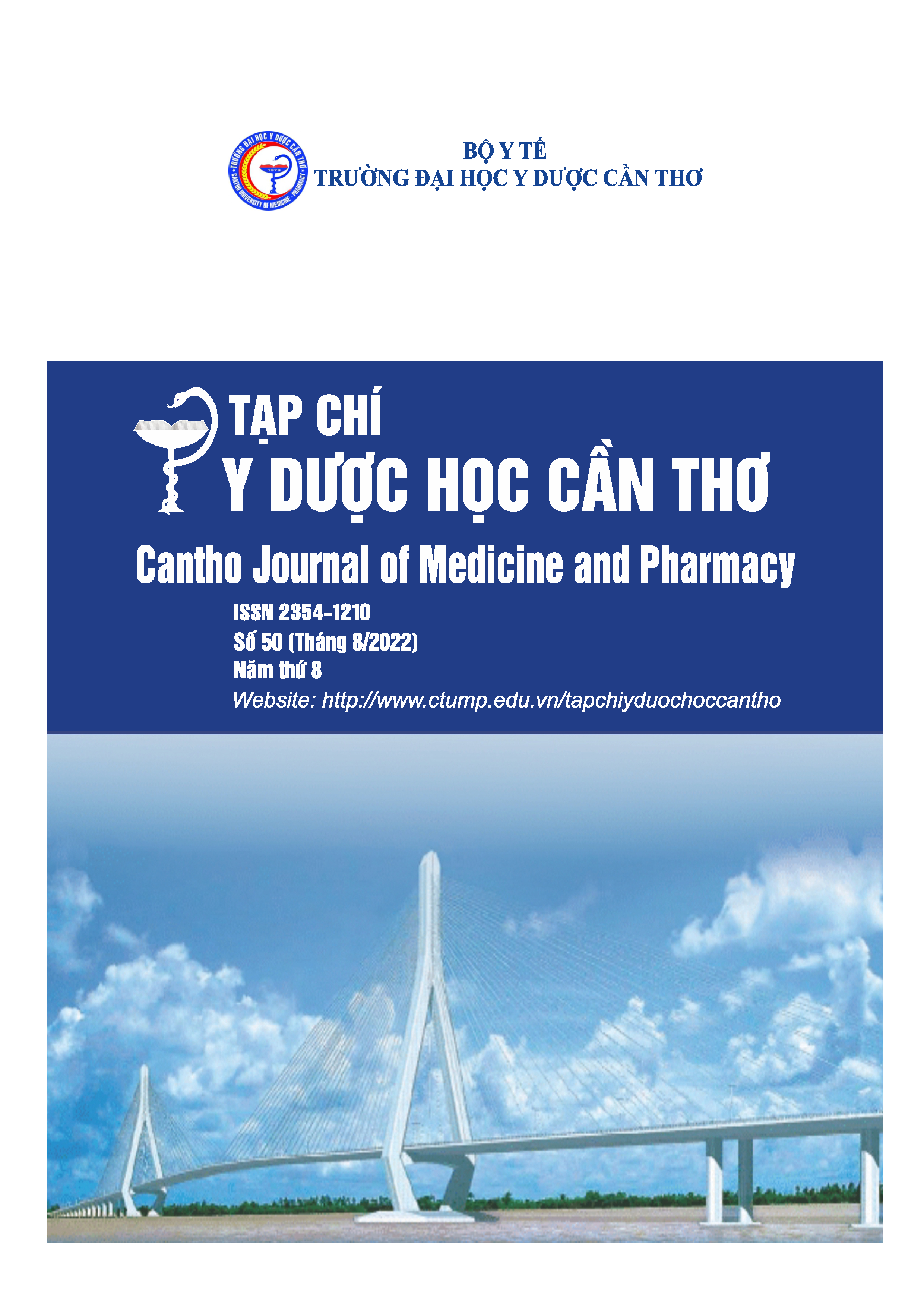PERIPHERAL BLOOD EOSINOPHILS AS A BIOMARKER FOR PREDICTING COPD EXACERBATION
Main Article Content
Abstract
Background: Chronic obstructive pulmonary disease exacerbations increase mortality and treatment cost, as well as decrease lung function, and impair quality of life. Peripheral blood eosinophils are an important prognostic factor of chronic obstructive pulmonary disease exacerbations. Objectives: To analyse the correlation between blood eosinophils and other factors in the prognosis of chronic obstructive pulmonary disease exacerbations. Materials and methods: A prospective cross-sectional study was conducted on 87 patients with stable chronic obstructive pulmonary disease. Results: The mean age was 67.5±9.49, and males accounted for 98.9%. The mean value of blood eosinophils was 386.49±376.82 cells/μL. There was no difference between groups of blood eosinophils <100, 100-300, and ≥300. Blood eosinophil counted ≥300 cells/μL with the GOLD C/ D was significant in the prognosis of exacerbations in the next 3 months. Conclusion: The peripheral blood eosinophils are not an independent risk factor for the prognosis of chronic obstructive pulmonary disease exacerbation. The peripheral blood eosinophils ≥300cells/μL with GOLD C/D is a significant risk factor for occurring chronic obstructive pulmonary disease exacerbation in the future.
Article Details
Keywords
Blood eosinophils, chronic obstructive pulmonary disease, exacerbation
References
2. Benson VS, Hartl S (2022), “Blood eosinophil counts in the general population and airways disease: a comprehensive review and meta-analysis”, Eur Respir J, 59(1), 2004590.
3. Chan MC, Yeung YC (2020), “Blood Eosinophil and Risk of Exacerbation in Chronic Obstructive Pulmonary Disease Patients: A Retrospective Cohort Analysis”, Int J Chron Obstruct Pulmon Dis, 15, pp.2869-2877.
4. D'Souza AO, Shah M, Dhamane AD, Dalal AA (2014) “Clinical and economic burden of COPD in a medicaid population”, COPD, 11(2), 212-220.
5. GOLD (2021), Global Strategy for the Diagnosis, Management and Prevention of COPD. http://goldcopd.org.
6. Hartley BF, Barnes NC, Lettis S (2020), “Risk factors for exacerbations and pneumonia in patients with chronic obstructive pulmonary disease: a pooled analysis”, Respiratory Research,21, pp 5.
7. Hastie AT, Martinez FJ, Curtis JL, Doerschuk CM, et al. (2017), “Association of sputum and blood eosinophil concentrations with clinical measures of COPD severity: an analysis of the SPIROMICS cohort”, Lancet Respir Med, 5(12), pp.956-967.
8. Hurst JR, Vestbo J, Anzueto A, Locantore N, et al. (2010), “Susceptibility to exacerbation in chronic obstructive pulmonary disease”, N Engl J Med, 363(12), pp.1128-1138.
9. Miravitlles M, Soler-Cataluña JJ, Soriano BJ et al. (2022), “Determinants of blood eosinophil levels in the general population and patients with COPD: a population-based, epidemiological study”, Respiratory Research, 23(49), pp.1-10.
10. Singh D, Kolsum U, Brightling CE, Locantore N, et al. (2014), “Eosinophilic inflammation in COPD: prevalence and clinical characteristics”, Eur Respir J, 44(6), pp.1697-1700.
11. Vedel-Krogh S, Nielsen SF, Lange P, Vestbo J, et al. (2016) “Blood Eosinophils and Exacerbations in Chronic Obstructive Pulmonary Disease. The Copenhagen General Population Study”, Am J Respir Crit Care Med, 193(9), pp.965-974.
12. Watz H, Tetzlaff K, Wouters EF, Kirsten A, et al. (2016) “Blood eosinophil count and exacerbations in severe chronic obstructive pulmonary disease after withdrawal of inhaled corticosteroids: a post-hoc analysis of the WISDOM trial”, Lancet Respir Med, 4(5), pp.390-398.
13. WHO (2019), The top 10 causes of death. https://www.who.int/news-room/fact sheets/detail/thetop-10-causes-of-death.


